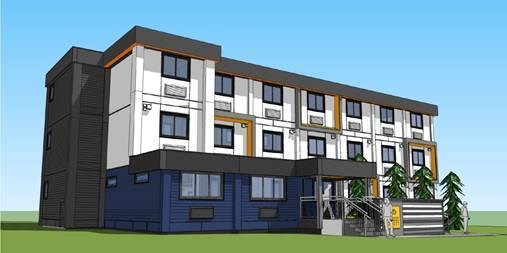Ninety-five per cent of Richmond residents couldn’t afford to buy a house in the city today, if they didn’t already own one.
Ninety per cent of Richmond residents couldn’t afford a townhouse in Richmond, and 80 per cent couldn’t afford a condo.
These are some of the statistics in the Housing Needs Report, compiled by Richmond city staff, to be submitted to the provincial government by April.
The report identifies numerous issues regarding housing affordability in Richmond, including how out-of-reach buying a home is for most residents, as well as the lack of affordable rental housing, like subsidized or co-operative housing.
But, in a planning meeting Thursday, Richmond city staff laid the blame for the dearth of supported rental units squarely at the feet of federal and provincial governments.
Joe Erceg, general manager of planning and development with the City of Richmond, told council’s planning committee repeatedly that tweaking policies at the municipal level to bring relief to the housing crisis won’t solve the problem. Rather, the federal and provincial governments need to provide steady funding for affordable housing, something that hasn’t been done in decades.
Erceg said a review of the Official Community Plan (OCP) – expected to start in the new year – will focus on housing, including affordable housing.
“The city can and should and will do everything it can to produce affordable housing, but – and I’m going to sound like a broken record here – you cannot solve this problem just with municipal policy,” Erceg told the planning committee.
But in order to secure senior government funding, there first has to be a firm commitment from the municipality, said Tiffany Duzita, executive director of the Community Land Trust, which holds land for non-profits in order to develop it largely in Vancouver.
In an earlier interview with the Richmond News, as a Richmond resident, she said she feels the city is falling behind other municipalities where affordable housing is removed from the private sector.
De Whalen, president of the Richmond Poverty Reduction Coalition, which represents 10 local non-profits, told the planning committee the report confirms what they have been hearing on the ground in Richmond.
She pointed out 52 per cent of people using the Richmond Food Bank are in market rentals and are having to spend money that should go to food on rent.
There are two ways affordability were looked at in the report. First, it considered the shelter-to-income ratio, which showed 25 per cent of all households in Richmond were spending more than 30 per cent of their income on housing.
The second measure was “core housing need,” households whose housing is inadequate because it’s too small or in poor condition.
In 2016, 20 per cent of Richmond households were in this latter category.
Meanwhile, 6,140 households had an “extreme core housing need,” meaning they spent more than 50 per cent of their income on housing.
Those numbers are from 2016, the last time statistics were available.
The report also notes that from 2006 to 2016, the cost to rent rose 4.5 times faster than household incomes. And the cost to buy a home rose 77 per cent, while incomes were “virtually unchanged.”
One-third of renters are struggling with housing affordability and low-income households have “significant challenges” getting market rentals they can afford.
Lengthy waitlists for affordable housing such at BC Housing units compound the issue.



